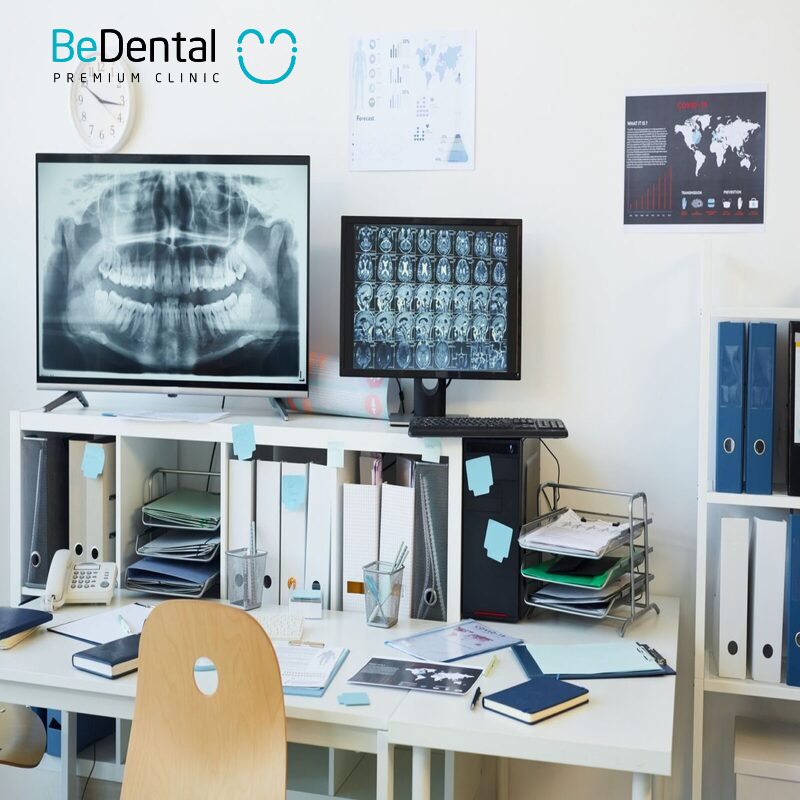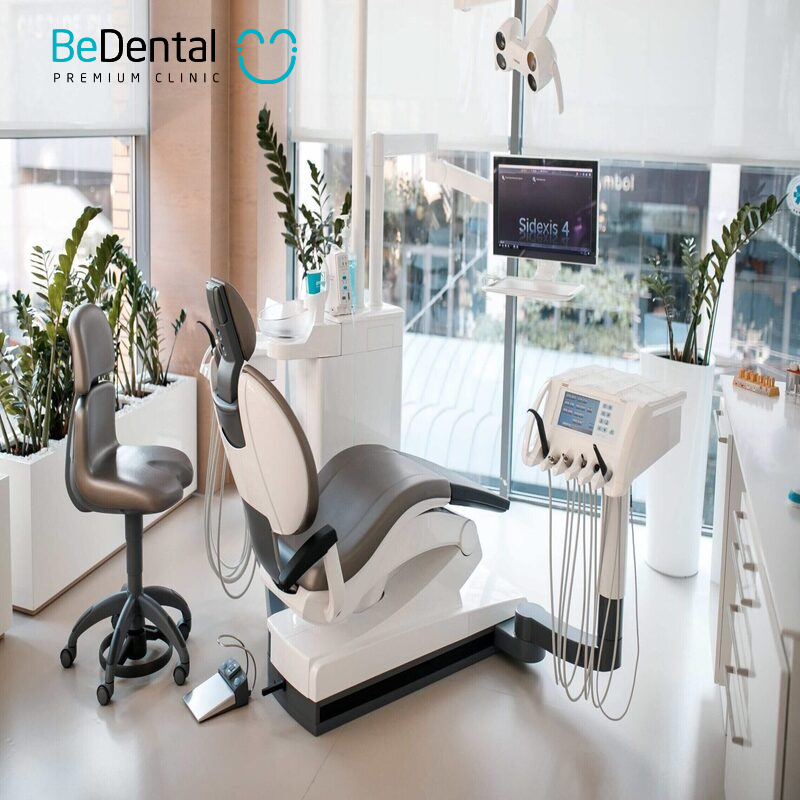In recent years, the dental industry has witnessed significant advancements in technology, particularly in the application of digital devices and automation. According to a report by MarketsandMarkets, the global dental equipment market is projected to reach approximately $12.2 billion by 2026, with an annual growth rate (CAGR) of up to 6.9% from 2021 to 2026. Technological Advances in Dental Equipment not only enhances the accuracy of diagnosis and treatment but also improves patient experience, reducing waiting times and increasing overall satisfaction.
Understanding Digital Dentistry and Its Necessity in Today’s Technological Era
Digital dentistry refers to the use of digital technologies and techniques to improve the processes of diagnosis, treatment, and oral healthcare. Rather than relying on traditional methods, digital dentistry employs advanced devices and software such as 3D scanners, CAD/CAM systems, and 3D printing to optimize treatment processes and enhance patient experiences.
In today’s technological landscape, the demand for high-quality services and accuracy in healthcare is rising, requiring dental clinics to adapt to technological trends. The adoption of digital dentistry not only minimizes treatment time but also improves diagnostic accuracy and recovery processes, leading to higher patient satisfaction.
Trends in Technological Advances in Dental Equipment
Technological Advances in Dental Equipment are enhancing the accuracy and efficiency of initial disease diagnosis while also improving patient comfort and satisfaction.
Enhancing Accuracy and Efficiency
The development of technology in dental equipment has significantly increased the accuracy of diagnosis and treatment. Devices such as 3D scanners enable dentists to create detailed images of patients’ oral structures, allowing for earlier detection of issues. This not only enhances treatment effectiveness but also minimizes potential errors during procedures.

Shifting from Traditional Methods to Digital Technology
Traditional dentistry often relied on outdated techniques and simple equipment, leading to inaccuracies and inefficiencies. However, the shift to digital dentistry has equipped practitioners with more modern tools. The use of technologies like CAD/CAM in fabricating crowns and bridges has reduced manufacturing time and improved the quality of the final product.
Impact of Technology on Patient Satisfaction
Technology not only changes how dentists perform treatments but also profoundly affects patient satisfaction. Patients often feel more at ease when treated with modern equipment and appreciate the accuracy and speed of the process. Reducing pain and wait times contributes to a more positive experience for patients, enhancing the reputation and brand of dental clinics.
Modern Technologies in Dental Equipment
Modern technologies used in dentistry today include 3D scanners (from 3D natives), CAD/CAM systems, lasers, cone beam CT, and various other smart applications.
3D Scanners and CAD/CAM Technology
3D scanners and CAD/CAM (Computer-Aided Design/Computer-Aided Manufacturing) technology have become essential tools in modern dentistry. 3D scanners accurately capture data about patients’ oral structures, creating clear three-dimensional images. This enables dentists to quickly and accurately identify issues. The biggest advantage of CAD/CAM is its ability to fabricate crowns, bridges, and other restorations in the clinic, shortening waiting times for patients while ensuring high accuracy in size and shape.
Applications in Fabricating Crowns and Bridges
With the help of 3D scanners and CAD/CAM technology, the fabrication of crowns and bridges has become quicker and more efficient. Dentists can create accurate 3D models of teeth, allowing them to plan treatments and produce restorations on the same day. The precision in fabrication reduces errors, increasing patient satisfaction when receiving products tailored to their oral structures.
Widespread Use of Dental Laser Technology
Dental laser technology is widely applied in many areas of dentistry, from treating cavities and gum disease to performing surgical procedures. Lasers can cut, coagulate, and cauterize with precision, without damaging surrounding tissues. The use of lasers helps minimize pain and swelling, providing a more comfortable experience for patients.

Benefits in Treatment and Recovery
One of the greatest benefits of dental lasers is their ability to provide effective and rapid treatment. This method not only reduces recovery time for patients but also decreases the risk of post-surgical infections. Additionally, lasers improve aesthetic outcomes, leading to higher patient satisfaction.
Cone Beam CT – Advanced Dental Technology
Cone Beam CT (Wikipedia) is an advanced diagnostic technology that allows for detailed three-dimensional imaging of dental and jaw structures. Its standout feature is the ability to provide high-quality images with lower radiation exposure compared to traditional CT machines. This helps dentists gain a comprehensive view of a patient’s condition, enabling more accurate treatment decisions.
Utilization in Diagnosis and Treatment Planning
Cone Beam CT is commonly used to diagnose complex issues such as periodontal disease, implant placements, and structural abnormalities. With detailed 3D images, dentists can accurately plan treatments, minimizing risks during procedures and enhancing the effectiveness of interventions.
Dental Practice Management Software
Dental practice management software is a comprehensive management tool that helps dentists and clinic staff track patient records, appointments, billing, and treatment processes. This feature optimizes workflow and improves management efficiency, saving time and costs for the clinic.
Impact on Clinic Workflow
Implementing dental practice management software has greatly influenced clinic workflows. Staff can easily access patient information, track appointments, and manage billing efficiently. This minimizes errors and enhances patient satisfaction, allowing dentists to focus on treatment and patient care.
The Future and Challenges of Digital Dentistry
In the coming years, the dental industry is expected to undergo a significant transformation with the extensive integration of digital technology. Advanced devices and software will not only enhance treatment processes but also change how dentists interact with patients. Technologies such as 3D scanning, 3D printing, and information management systems will become standard, optimizing performance and improving the quality of care.
The Impact of Artificial Intelligence (AI) and Machine Learning
Artificial intelligence and machine learning are opening new opportunities in dentistry, from analyzing diagnostic data to personalizing treatment plans for individual patients. AI can assist dentists in detecting conditions earlier and more accurately through image analysis and medical data evaluation. AI systems also have the capability to predict potential health issues based on genetic information and medical history.

Potential Improvements in Diagnosis, Treatment, and Patient Care
Digital technology not only enhances diagnostic and treatment processes but also provides a better experience for patients. Tools like 3D scanners and CAD/CAM will create more precise restorations, while dental practice management systems will enable better patient monitoring and care. The application of AI technology will also increase patient satisfaction through personalized and rapid services.
Challenges in Implementing New Technologies in Dentistry
While new technologies offer significant benefits to the dental field, their adoption faces a range of challenges. Firstly, the initial investment costs for advanced equipment and software can be high, posing difficulties for many clinics, especially smaller practices. Moreover, training and updating staff knowledge is a crucial factor, as personnel need to be adequately equipped with skills to effectively utilize new technologies.
Finally, patient acceptance is also a considerable challenge; some patients may feel apprehensive or unfamiliar with modern treatment methods. Therefore, dental practices need to develop reasonable strategies to overcome these barriers, thereby maximizing the benefits that new technology offers for both dentists and patients.
For those seeking further consultation regarding dental examination services, please visit BeDental’s locations in Hanoi or Ho Chi Minh City. BeDental is a reputable dental clinic in Vietnam. You can also reach us at our hotline: (+84) 934.61.9090 / (+84) 899.555.636 or through our Facebook page, BeDental, for prompt and accurate assistance.




